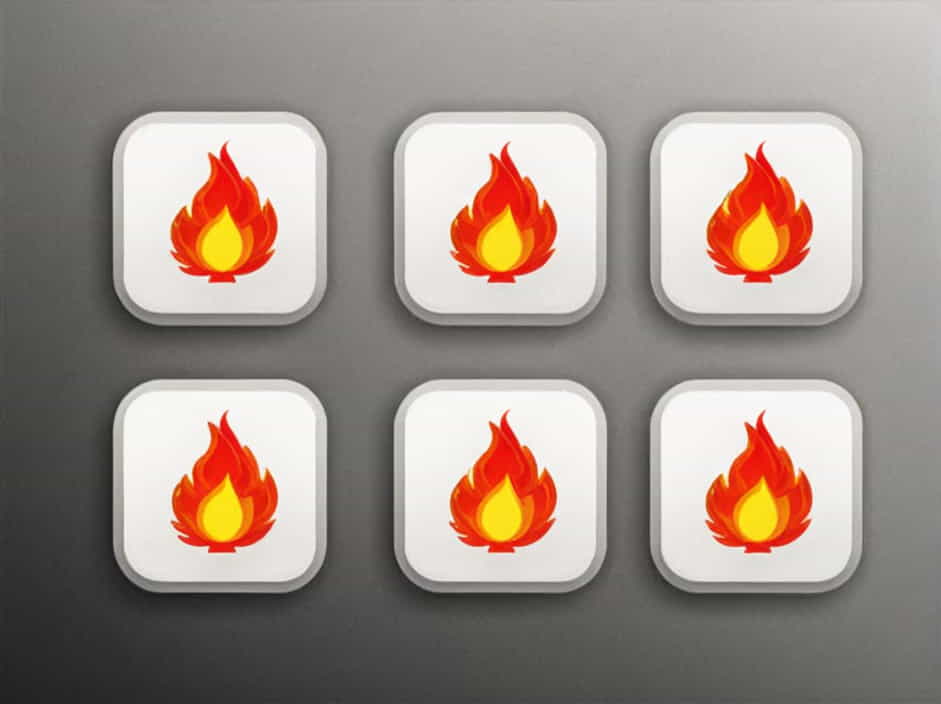Combustion and flame are essential concepts in Class 8 Science, helping students understand how substances burn and produce energy. This topic covers the types of combustion, the structure of a flame, and the factors necessary for burning.
To test your knowledge, we have created an interactive quiz on combustion and flame along with explanations of important concepts. Let’s dive in!
Understanding Combustion
What is Combustion?
Combustion is the process of burning a substance in the presence of oxygen to produce heat and light. The substance that undergoes combustion is called a fuel.
Types of Combustion
- Rapid Combustion – When a substance burns quickly, producing heat and light (e.g., burning LPG gas).
- Spontaneous Combustion – When a substance catches fire suddenly without an external flame (e.g., forest fires).
- Explosion – A sudden release of heat, light, and sound due to rapid combustion (e.g., bursting of crackers).
Conditions for Combustion
For combustion to take place, three things are required:
- Fuel (substance that burns)
- Oxygen (supports burning)
- Heat (ignition temperature)
This is known as the fire triangle.
Structure of a Flame
A burning candle or gas stove flame consists of three distinct zones:
- Innermost Zone (Dark Zone) – Contains unburnt wax vapors; no combustion occurs here.
- Middle Zone (Luminous Zone) – Incomplete combustion occurs, giving the flame a yellow color.
- Outer Zone (Non-Luminous Zone) – Complete combustion occurs, producing a blue flame.
The blue flame is hotter and indicates efficient combustion, while the yellow flame results from incomplete combustion and produces soot.
Fuel and Its Efficiency
What is a Fuel?
A fuel is a substance that burns to produce heat and light. Examples include wood, coal, petrol, and LPG.
Characteristics of a Good Fuel
- High calorific value (produces more heat).
- Eco-friendly (low pollution).
- Easily available and affordable.
Calorific Value of Fuels
Different fuels release different amounts of energy, measured in kilojoules per kilogram (kJ/kg).
- Wood – 17,000 kJ/kg
- Coal – 25,000 kJ/kg
- LPG – 55,000 kJ/kg
- Hydrogen – 1,50,000 kJ/kg
LPG and CNG are preferred fuels because they are cleaner and more efficient.
Fire Control and Fire Extinguishers
Fires can be dangerous, and knowing how to control them is essential.
Methods to Control Fire
- Removing Oxygen – Using carbon dioxide or a blanket to cut off the oxygen supply.
- Lowering Temperature – Spraying water to cool down the burning material.
- Removing Fuel – Stopping the supply of flammable substances.
Types of Fire Extinguishers
- Water – Used for wood and paper fires.
- Carbon Dioxide (CO₂) – Used for electrical and oil fires.
- Foam Extinguishers – Effective on petrol and kerosene fires.
Quiz on Combustion and Flame (Class 8)
Section 1: Multiple-Choice Questions (MCQs)
-
Which of the following is necessary for combustion to occur?
- Water
- Oxygen
- Carbon dioxide
- Nitrogen
Answer: b) Oxygen
-
What is the hottest part of a candle flame?
- Inner zone
- Middle zone
- Outer zone
- None of these
Answer: c) Outer zone
-
Which fuel has the highest calorific value?
- Wood
- Coal
- LPG
- Hydrogen
Answer: d) Hydrogen
-
Which type of combustion occurs when a matchstick is struck?
- Rapid combustion
- Spontaneous combustion
- Explosion
- Slow combustion
Answer: a) Rapid combustion
-
Which gas is produced during incomplete combustion of fuels?
- Oxygen
- Carbon monoxide
- Hydrogen
- Nitrogen
Answer: b) Carbon monoxide
Section 2: True or False
-
LPG is a better fuel than wood because it produces more heat and less smoke.
Answer: True -
The middle zone of a flame is the hottest part.
Answer: False (The outer zone is the hottest.) -
Water can be used to extinguish oil fires.
Answer: False (Water spreads the fire; CO₂ is used instead.) -
A blue flame indicates incomplete combustion.
Answer: False (A blue flame shows complete combustion.) -
Carbon dioxide is used in fire extinguishers because it does not support combustion.
Answer: True
Section 3: Fill in the Blanks
-
The minimum temperature required for a substance to catch fire is called the ________.
Answer: Ignition temperature -
The presence of ________ gas is necessary for combustion.
Answer: Oxygen -
The calorific value of hydrogen is ________ kJ/kg.
Answer: 1,50,000 -
The ________ zone of a flame is the least hot.
Answer: Innermost (dark) -
Burning of paper is an example of ________ combustion.
Answer: Rapid
Section 4: Short Answer Questions
-
Why is LPG preferred over wood as a fuel?
Answer: LPG has a higher calorific value, produces less smoke, and is more efficient than wood. -
How does a fire extinguisher work?
Answer: A fire extinguisher removes oxygen, cools down the burning material, or removes fuel to stop combustion. -
What are the harmful effects of incomplete combustion?
Answer: It produces carbon monoxide, which is toxic, and soot, which causes pollution. -
Why does a candle flame appear yellow?
Answer: The middle zone of the flame undergoes incomplete combustion, producing a yellow glow. -
What is spontaneous combustion? Give an example.
Answer: Spontaneous combustion occurs when a substance catches fire without an external flame. Example: Forest fires.
Understanding combustion and flame is important for safety and energy efficiency. This topic explains how fuels burn, the structure of a flame, and fire control methods. The quiz on combustion and flame for Class 8 helps students test their knowledge in a fun way.
Did you get all the answers right? Keep learning and stay curious!
